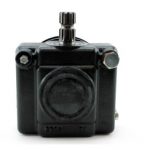LawnEQ is a trusted source for genuine OEM Parts- Shop for the part you need from your favorite manufacturers such as Landpride, Toro, Kubota, and more today on our OEM Parts Lookup Tool!
In our push for the perfect green lawn, our use of turf grass has pushed out other ground cover. As much as we discuss the withering of the bee population, this part of it is rarely discussed. So why not do your part to help the bees thrive, and consider transitioning your lawn to a bee-friendly lawn in the upcoming year?
Lots of Clover

Plain and simple, clover is the most attractive and efficient plant for bees and other pollinators – there’s a reason why clover honey is so abundant. It can be mixed in with the general lawn, or if you enjoy your green carpet, you can just plant patches of it in strategic areas. It smells great, it doesn’t grow too high, and when you do mow it, the clippings are very nutritious for the lawn. It’s even fairly drought-resistant, so it’ll keep your lawn looking good in dry spells.
Use Cool-Season Grasses
These grasses provide year-round growth, are usually fairly drought resistant, and provide some cover for bees that nest on the ground. Fescues such as fine fescue and sheep fescue are great choices, and are fairly attractive to boot. They grow well in the shade, and can develop even as wildflowers grow over top of them.
Other Beneficial Plants
Bees don’t just enjoy clover and wildflowers – they also enjoy herbs and annuals, particularly those that develop from a bulb. These include:
- Thyme
- Dandelions
- Croscuses
- Mint
- Chamomile
Best of all, when the bees disappear or go dormant for the winter, the herbs are still there for cooking.
Let Your Lawn Develop
Don’t cut your ground cover too low, and don’t trim back your plants too far. By avoiding pesticides and herbicides, and letting everything grow a bit higher than usual, you may see some new and beneficial plants popping up. Wildflowers are very popular with bees, as are broadleaf plants and herbicides are likely to kill these plants off. Let everything grow to around 5 or 6 inches in height for the best effect.
Some Cautions for Bee Lawns
There are some things you will need to be wary of if you are trying to create a bee lawn.
- If you’ve got small children running around the lawn often, a bee lawn might not be a great idea. Bees don’t want to sting, but will do so if necessary, and while an adult will be careful and will leave them alone, a child might not.
- Same goes for folks who are allergic to stings. Don’t take your chances.
- Letting your lawn develop is not the same as letting it get sloppy. Don’t be that neighbor with the overgrown, out-of-hand lawn.
- Let your neighbors know what you are doing, as a courtesy. It’s always nice to know if there will be an increase in bees around, just in case they have young children or are allergic.
So consider restructuring your lawn going forward, and make it a hot spot for bees in the coming years. Anything we can do to help develop and maintain the bee population will help out our environment in the long run.






